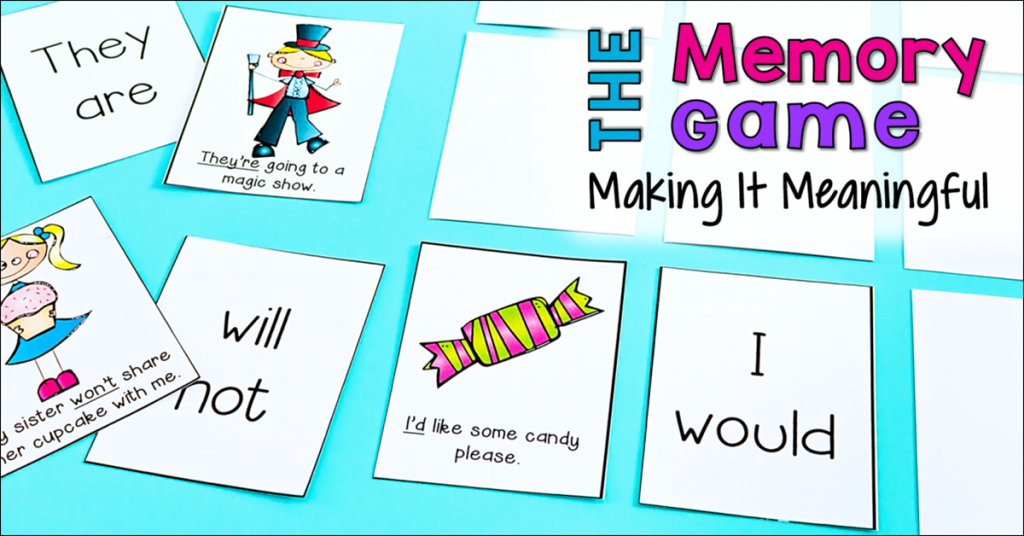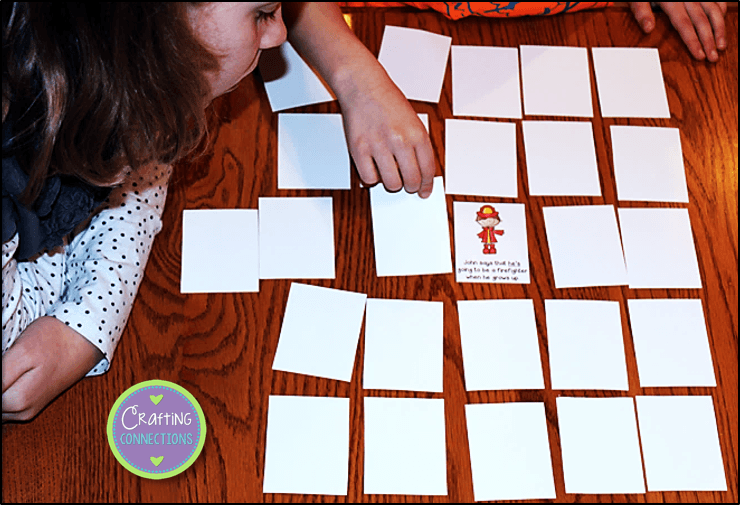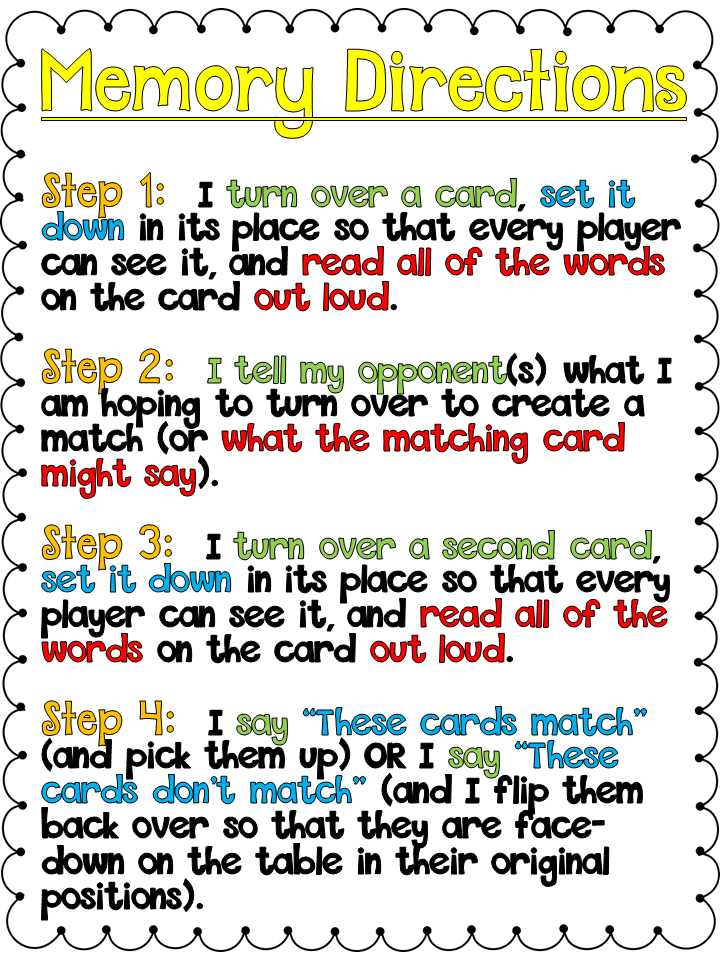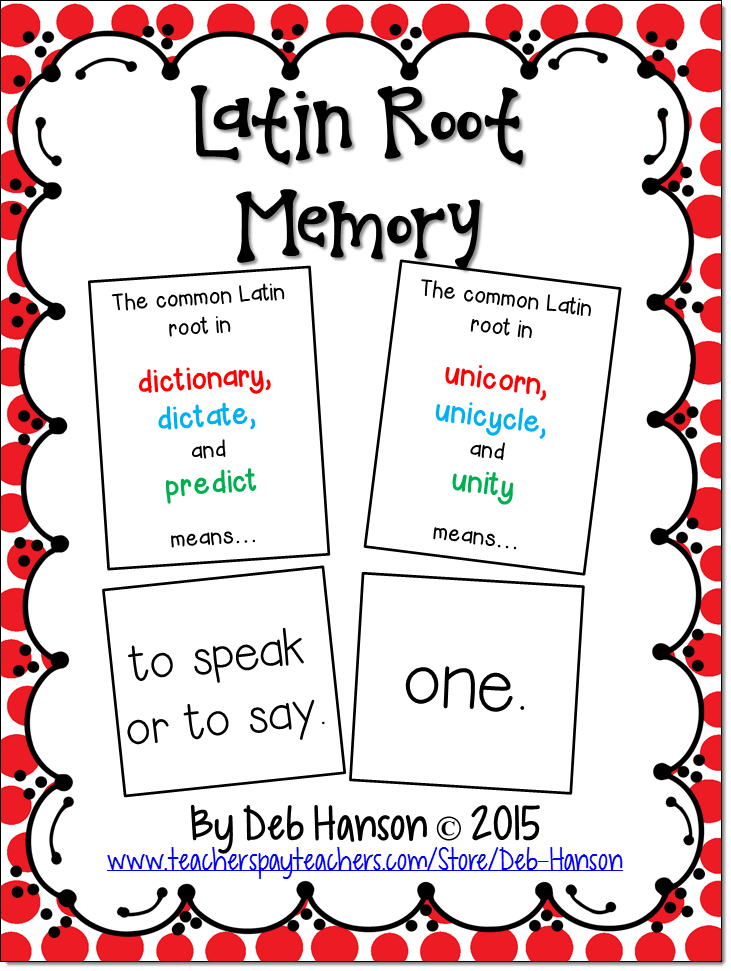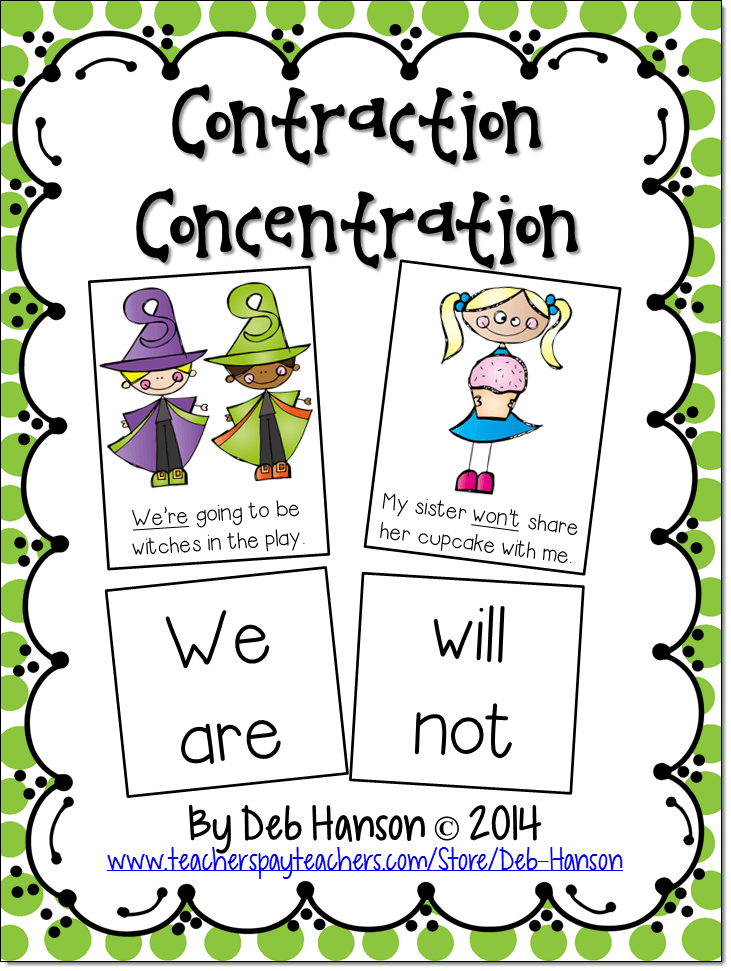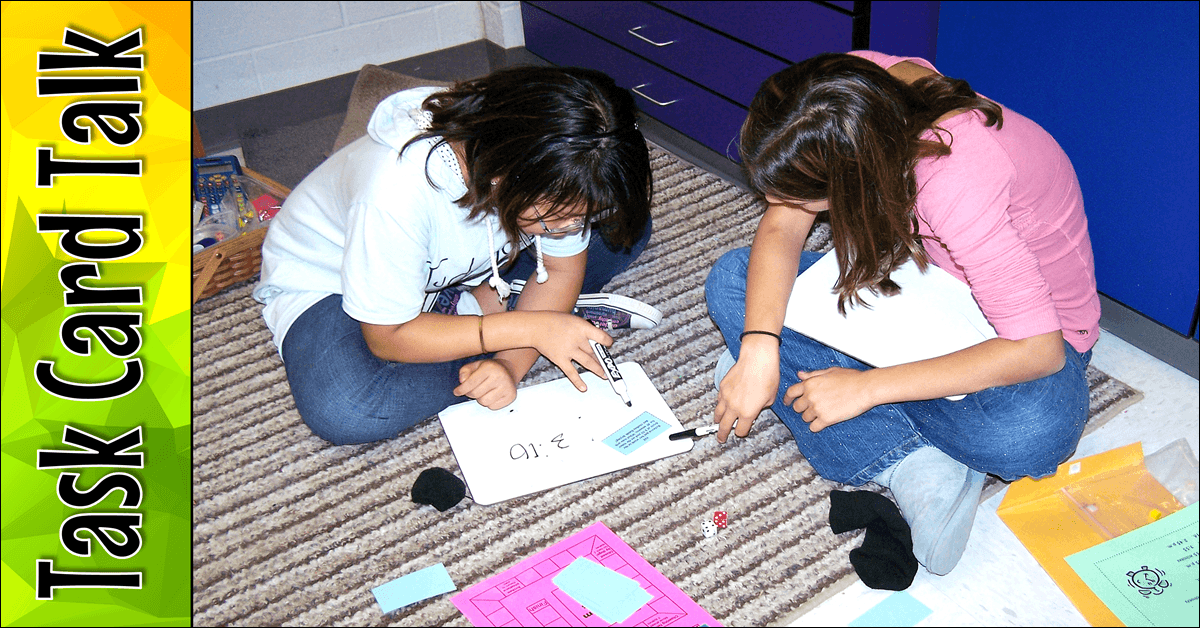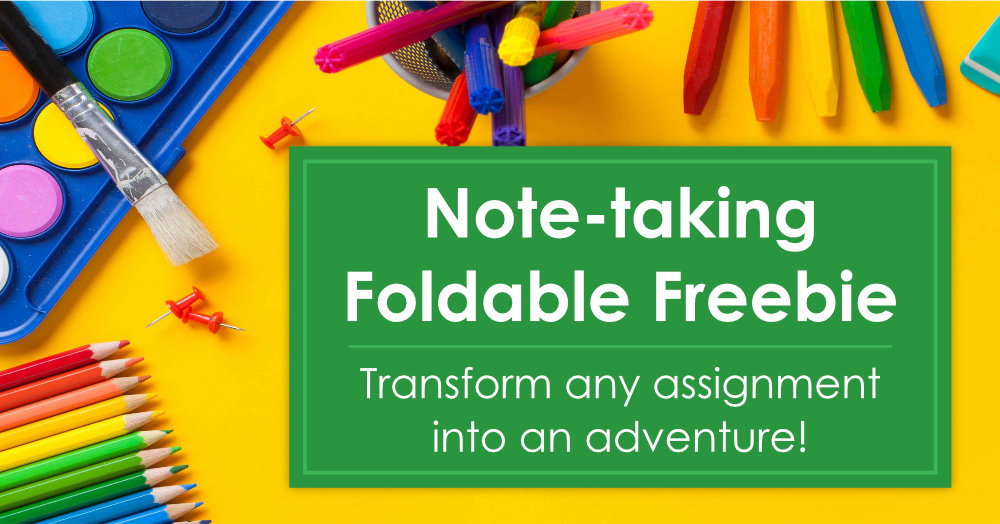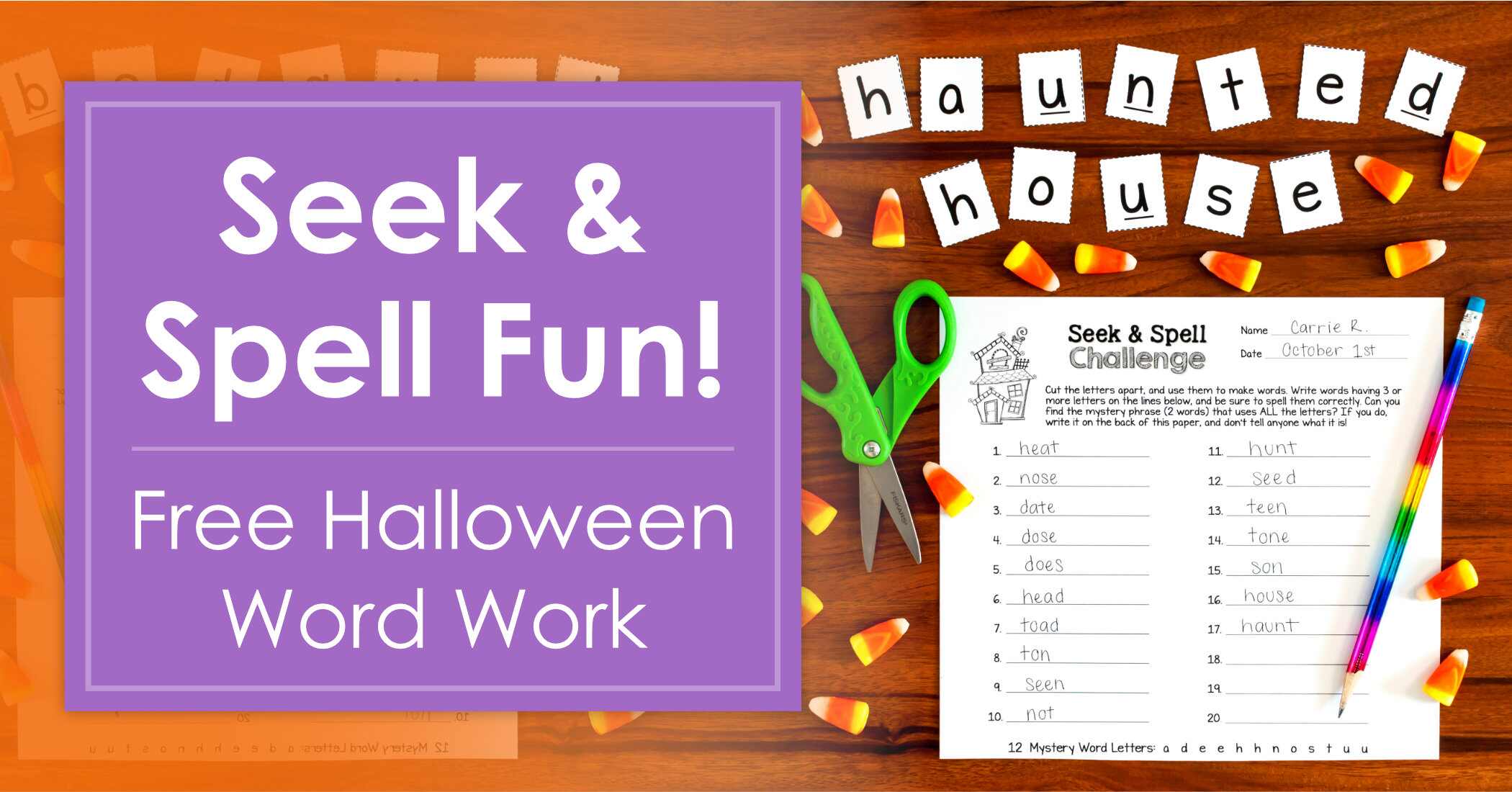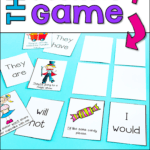Guest post by Deb Hanson of Crafting Connections
I have always enjoyed playing the Memory Game (also called “Concentration”). I remember when my twin sister and I received it as a birthday gift when we were about eight years old. We played Memory for hours. When I began teaching, I created several Memory games that matched the various skills we were working on. As is the case with most learning games in the classroom, my students always CHEERED! when I announced that we were going to be playing Memory.
Over the years, though, I have come to realize that students need to be explicitly taught how to play this game. If students play correctly, this can be a highly educational game. The opposite is also true, however. If played carelessly, Memory can end up being nothing more than a meaningless matching-pictures game.
I have witnessed the following scene more times than I care to count:
Joe and Kara are playing Memory. It’s Joe’s turn. He immediately turns over two cards, and quickly looks to see if the pictures match. They don’t match so he flips the cards back over and tells Kara that it’s her turn. Kara does the same thing. Although there is writing on both cards, neither student bothers to read the words.
Teaching Kids How to Make the Memory Game Meaningful
Through the years, I have learned to teach my students how to play Memory before turning them loose to play. Document cameras make this quite easy. I just spread some cards out under the camera as if I am playing a game, and I choose a volunteer to come to the document camera to play with me. After the cards are arranged, I tell the students that I am going to go first, and model exactly how I expect them play the game.
Step 1: I turn over a card, set it down in its place so that every player can see it, and read all of the words on the card out loud.
Step 2: I tell my opponent(s) what I am hoping to turn over to create a match (or what the matching card might say).
Step 3: I turn over a second card, set it down in its place so that every player can see it, and read all of the words on the card out loud.
Step 4: I say either “These cards match” (and pick them up) or I say “These cards don’t match” (and I flip them back over so that they are face-down on the table in their original position).
My student volunteer and I take a few turns, and I instruct my students to watch and tell us if we miss a step. (I intentionally skip a step or two just to make sure they notice.) After I feel that they know the correct way to play the game, I pass out the materials and allow them to play. Then I walk around the room, observing the games, and reminding students if they skipped one of the four important steps. After the first time playing, I rarely need to remind them of missed steps because they help each other remember!
Memory Game Freebies
If you’d like to use my directions with your students, right click the image below and save it to use later.
Are you in the mood to play Memory now? If so, you can purchase the Latin Root Memory game and Contraction Concentration from my TpT store.
Taking a few extra minutes to explicitly teach my students this method has proven to be time well spent in my classroom. When I teach my students this procedure for playing Memory, the game becomes not only motivational, but also meaningful. What a powerful combination!
Deb Hanson has taught 16 years in a school district in Nebraska. She has taught second grade, 4-5 Reading, and K-6 ESL. Deb is the creator of the Crafting Connections blog where she enjoys sharing her strategies with others.

